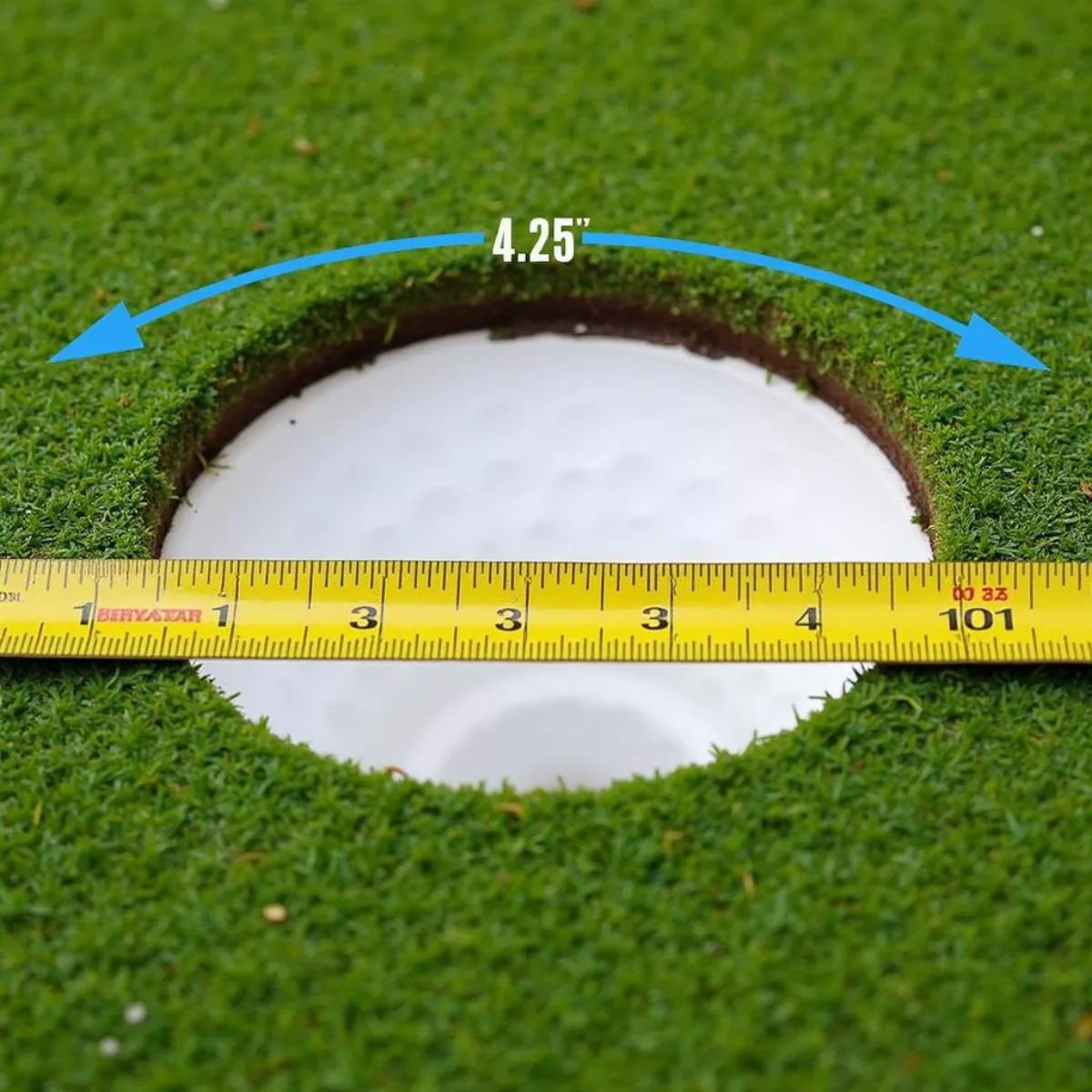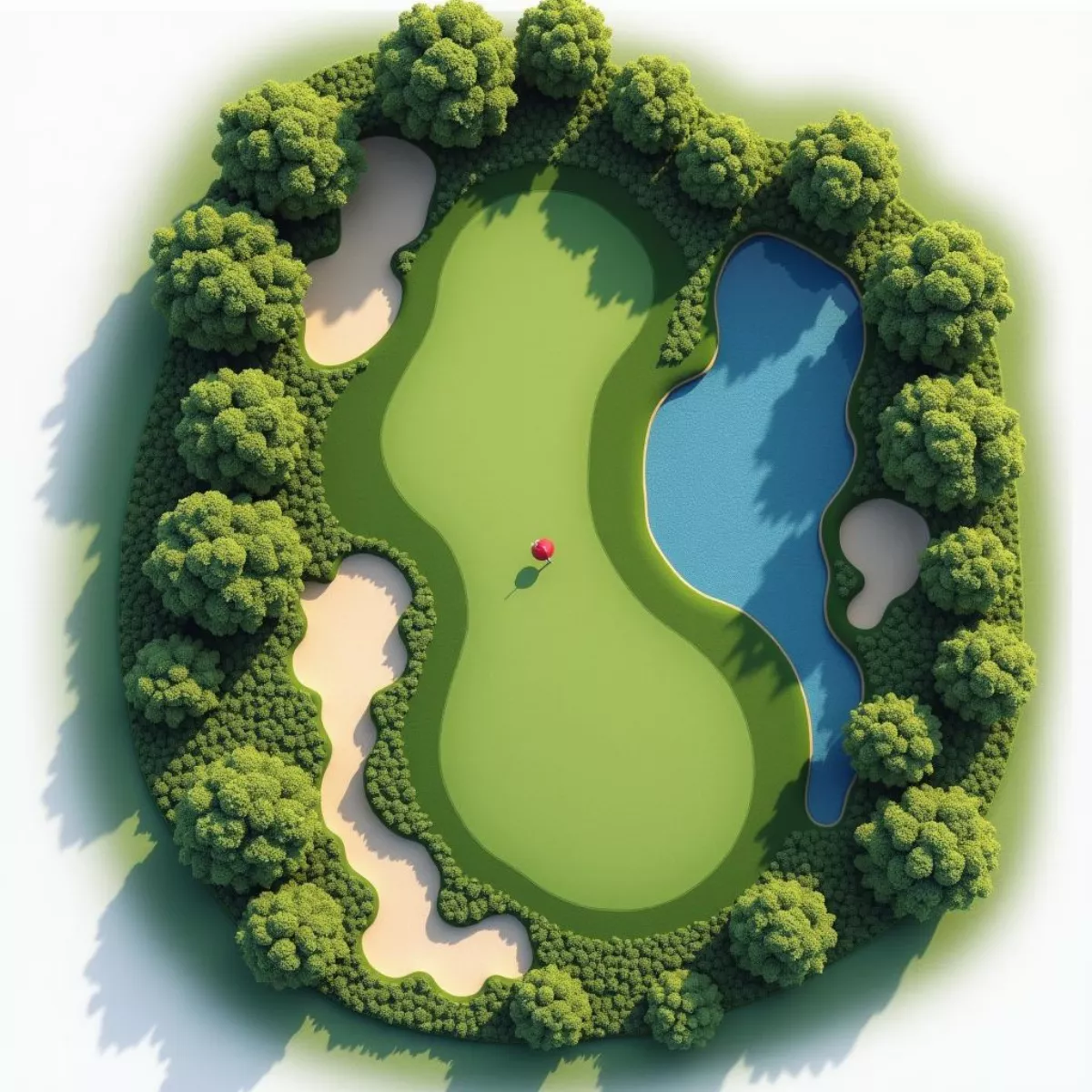Golf is a sport enjoyed by millions around the globe, and while many elements contribute to the game’s intrigue, few are as iconic as the golf hole. But have you ever stopped to wonder just how big that hole really is? In this guide, we will dive deep into the diameter of a golf hole and explore its significance, design, and some fascinating facts that surround this seemingly simple aspect of the game.
The Official Measurement
According to the Rules of Golf, the diameter of a golf hole is precisely 4.25 inches (108 mm). This measurement is standardized across all courses and is established by the United States Golf Association (USGA) and the Royal & Ancient Golf Club (R&A). This uniformity ensures that every golfer, whether they’re teeing up on the lush greens of Pebble Beach or at a local municipal course, faces the same challenge when it comes to putting.
Why 4.25 Inches?
You might be asking, why precisely 4.25 inches? The answer is straightforward—this size strikes a balance between challenge and accessibility. A smaller diameter would make the game significantly more difficult, while a larger hole could diminish the skill aspect of putting. Essentially, 4.25 inches is a sweet spot that requires precision, technique, and a bit of luck.
 Standard Golf Hole Diameter
Standard Golf Hole Diameter
The Design and Construction of Golf Holes
While the dimensions may be uniform, the design of a golf hole can vary significantly, contributing to different levels of challenge and playability.
Essential Elements of Golf Hole Design
- Construction Material: Golf holes are typically made of a durable material that can withstand weather conditions and wear from repeated play, such as metal or plastic.
- Placement: The position of the hole on the green can greatly affect the game’s difficulty. A hole placed on a slope may present more of a challenge than one located on level ground.
- Surrounding Terrain: The landscape surrounding the hole can influence putting lines and strategies. Bunkers, water hazards, and elevation changes play a critical role in hole design.
 Golf Course Design Elements
Golf Course Design Elements
Fun Facts About Golf Holes
Here are some interesting tidbits that may surprise you:
- Depth: A regulation golf hole must be at least 4 inches deep to accommodate the ball completely.
- Ball Size: Standard golf balls have a diameter of 1.68 inches (42.67 mm), making it clear why precision and accuracy are critical when putting.
- Historical Design Changes: In the early days of golf, holes were often much larger—some even exceeding 6 inches in diameter. The standardization to 4.25 inches happened in the late 1800s.
- Trick Holes: Some golf courses feature “trick holes”, where the hole may be elevated or located in a unique position to add an extra layer of challenge.
The Importance of Cup Placement
Cup placement is another vital aspect of the golf hole that can dramatically change gameplay. Here are factors to consider:
- Distance from the Edge: A hole located too close to the edge of the green may be easier, as players have a better angle for approach shots.
- Slope Influence: The incline around the hole can create deceptive breaks, affecting the ball’s path significantly.
- Green Speed: The speed of the green also changes how you approach the hole; faster greens require a lighter touch.
 Golf Green Cup Placement Variations
Golf Green Cup Placement Variations
Key Takeaways
- The diameter of a golf hole is a standardized 4.25 inches.
- This size ensures a mix of challenge and accessibility for players at all skill levels.
- Hole design not only includes the cup’s diameter but also its placement, surrounding terrain, and overall green design.
Frequently Asked Questions (FAQ)
- What is the diameter of a golf hole?
- The official diameter of a golf hole is 4.25 inches (108 mm).
- Why was the golf hole standardized to 4.25 inches?
- This size provides a balance between challenge and accessibility for golfers.
- How deep is a golf hole?
- A golf hole must be at least 4 inches deep.
- What material is used to construct golf holes?
- Golf holes are generally made of durable materials like metal or plastic.
- How does cup placement affect putting?
- Cup placement can significantly influence the difficulty of a hole, depending on its distance from the edge and the slope of the surrounding area.
- Are there variations in golf hole sizes worldwide?
- No, the diameter of a golf hole is standardized by the USGA and R&A, ensuring uniformity across the globe.
- What role do environmental factors play in golf hole design?
- Environmental features such as wind, moisture, and elevation can alter the gameplay experience and strategies golfers deploy.
- How often should golf holes be changed or moved?
- The placement of golf holes should be varied regularly to maintain challenge and avoid wear on the green surface.
- What is a trick hole?
- A trick hole is a unique or challenging hole designed to test a golfer’s skills beyond normal putting.
- What are some common putting techniques to use in golf?
- Techniques include the pendulum technique, the open stance approach, and visualization of the putt line.
By understanding the diameter of a golf hole and its implications, players can adopt strategies that help improve their game and navigate the challenges presented by various courses. Now that you know the ins and outs of golf holes, you might just find yourself making that perfect putt!
 Golfer Celebrating on the Green
Golfer Celebrating on the Green
In this way, you are equipped not only with knowledge about the golf hole diameter but also with a broader understanding of how this simple element affects the game. Remember to incorporate these insights into your next round of golf! Happy putting!